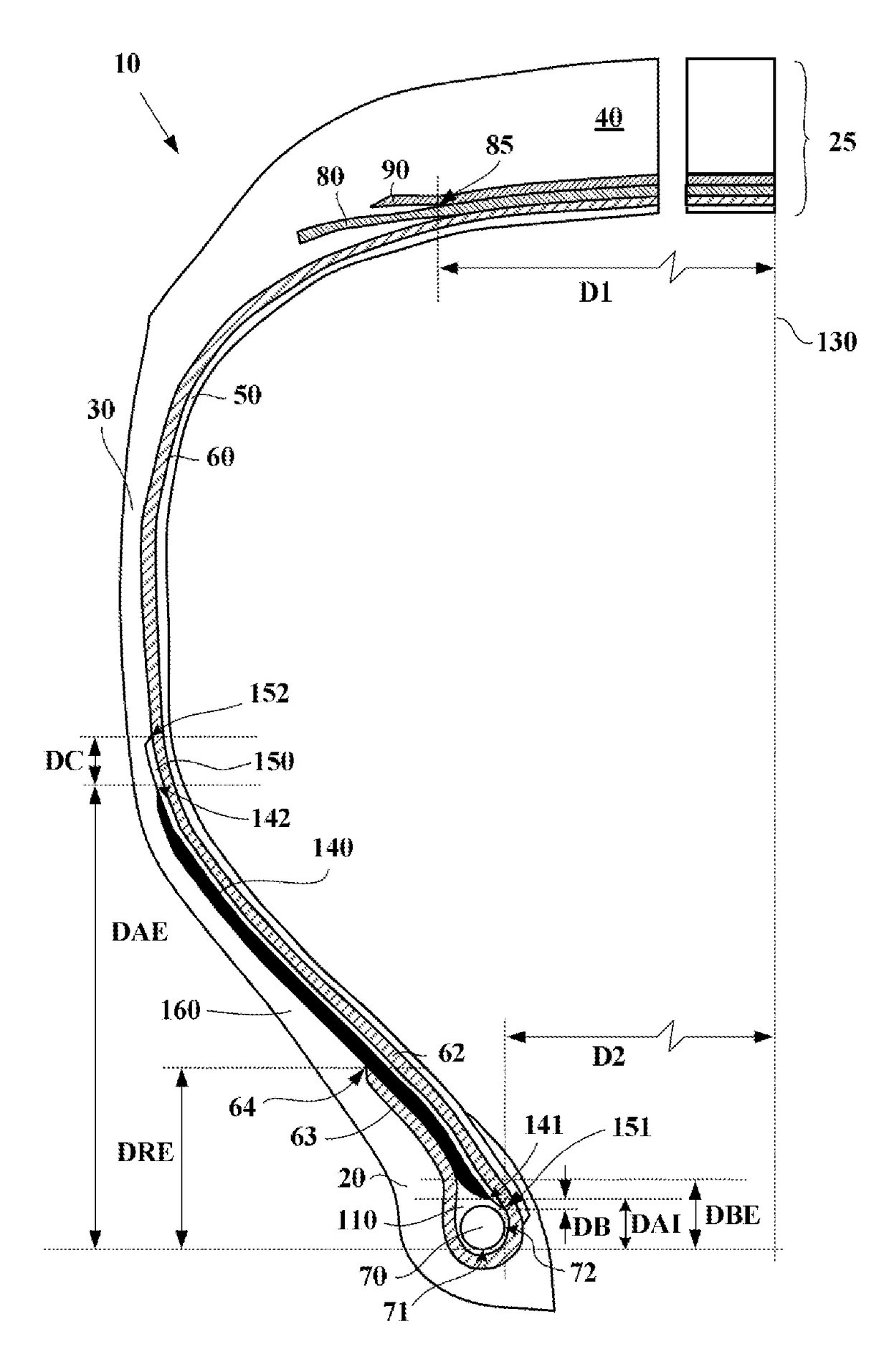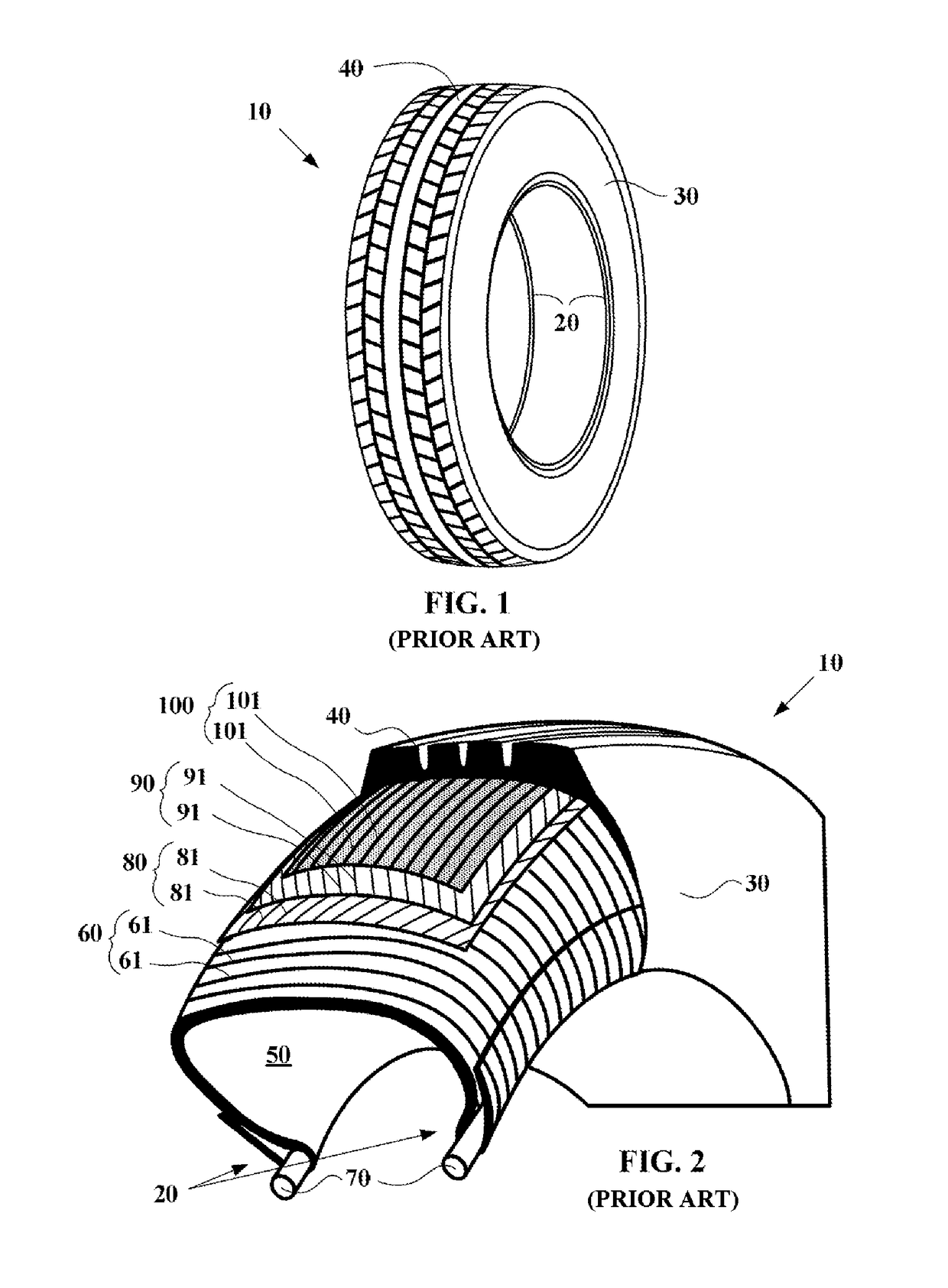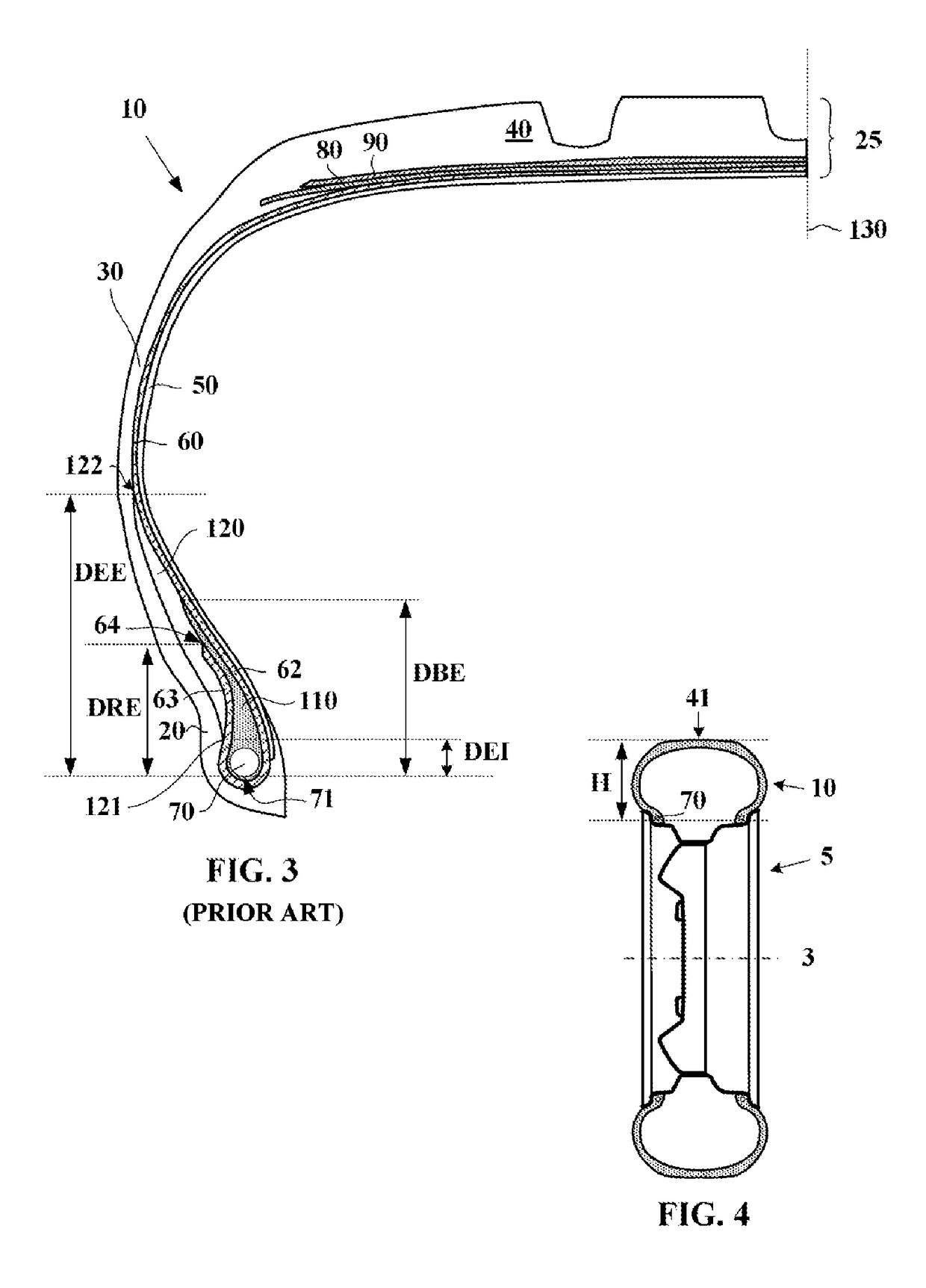Tire assembly having an improved bead and a mounting rim
a technology of a tire assembly and a bead, which is applied in the direction of tire beads, pneumatic tyre reinforcements, vehicle components, etc., can solve the problems of significant hysteresis losses, greenhouse gas emissions, and impact on vehicle fuel consumption, and achieves low rolling resistance and good endurance
- Summary
- Abstract
- Description
- Claims
- Application Information
AI Technical Summary
Benefits of technology
Problems solved by technology
Method used
Image
Examples
Embodiment Construction
[0049]When using the term “radial” it is appropriate to make a distinction between the various different uses made of this word by those skilled in the art. Firstly, the expression refers to a radius of the tire. It is in this sense that a point P1 is said to be “radially inside” a point P2 (or “radially on the inside of” the point P2) if it is closer to the axis of rotation of the tire than is the point P2. Conversely, a point P3 is said to be “radially outside” a point P4 (or “radially on the outside of” the point P4) if it is further away from the axis of rotation of the tire than is the point P4. Progress will be said to be “radially inwards (or outwards)” when it is in the direction towards smaller (or larger) radii. It is this sense of the term that applies also when matters of radial distance are being discussed.
[0050]By contrast, a thread or reinforcement is said to be “radial” when the thread or the reinforcing elements of the reinforcement make an angle greater than or equ...
PUM
| Property | Measurement | Unit |
|---|---|---|
| thickness | aaaaa | aaaaa |
| thickness | aaaaa | aaaaa |
| radial distance | aaaaa | aaaaa |
Abstract
Description
Claims
Application Information
 Login to View More
Login to View More - R&D
- Intellectual Property
- Life Sciences
- Materials
- Tech Scout
- Unparalleled Data Quality
- Higher Quality Content
- 60% Fewer Hallucinations
Browse by: Latest US Patents, China's latest patents, Technical Efficacy Thesaurus, Application Domain, Technology Topic, Popular Technical Reports.
© 2025 PatSnap. All rights reserved.Legal|Privacy policy|Modern Slavery Act Transparency Statement|Sitemap|About US| Contact US: help@patsnap.com



